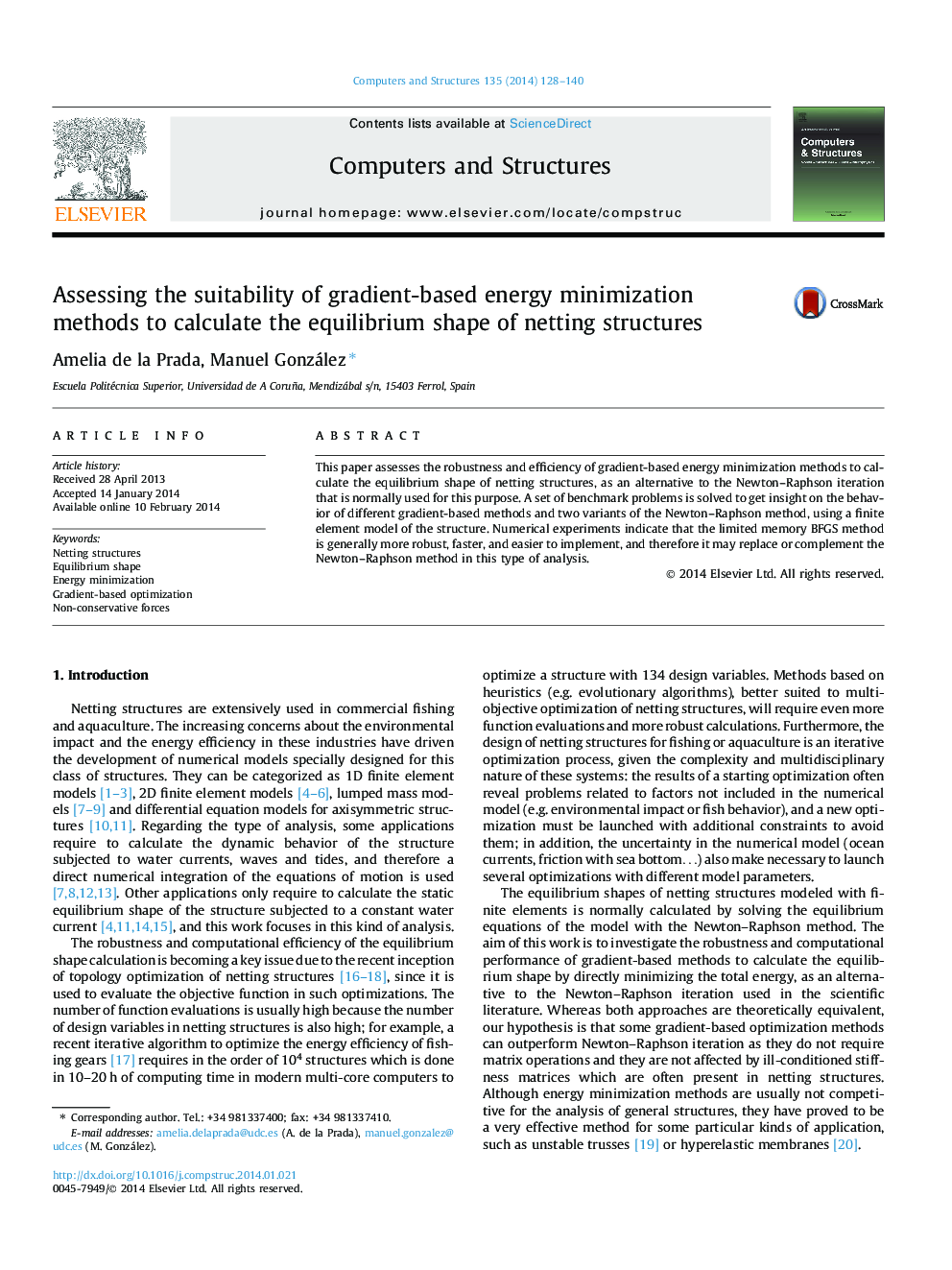| Article ID | Journal | Published Year | Pages | File Type |
|---|---|---|---|---|
| 509796 | Computers & Structures | 2014 | 13 Pages |
•Gradient-based energy minimization is compared with Newton–Raphson iteration.•A set of benchmark problems is used to assess the performance of simulation methods.•Limited memory BFGS (LBFGS) is usually faster, more robust and easier to implement.•LBFGS has poor convergence in structures with elements of very different stiffness.•LBFGS may replace or complement Newton–Raphson iteration is this kind of analysis.
This paper assesses the robustness and efficiency of gradient-based energy minimization methods to calculate the equilibrium shape of netting structures, as an alternative to the Newton–Raphson iteration that is normally used for this purpose. A set of benchmark problems is solved to get insight on the behavior of different gradient-based methods and two variants of the Newton–Raphson method, using a finite element model of the structure. Numerical experiments indicate that the limited memory BFGS method is generally more robust, faster, and easier to implement, and therefore it may replace or complement the Newton–Raphson method in this type of analysis.
